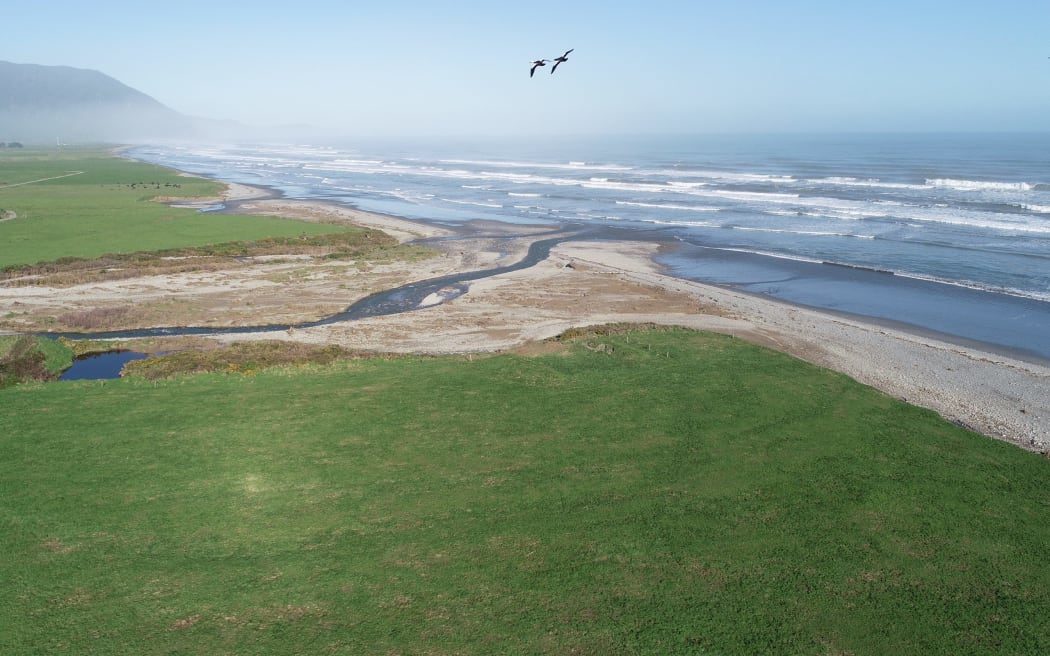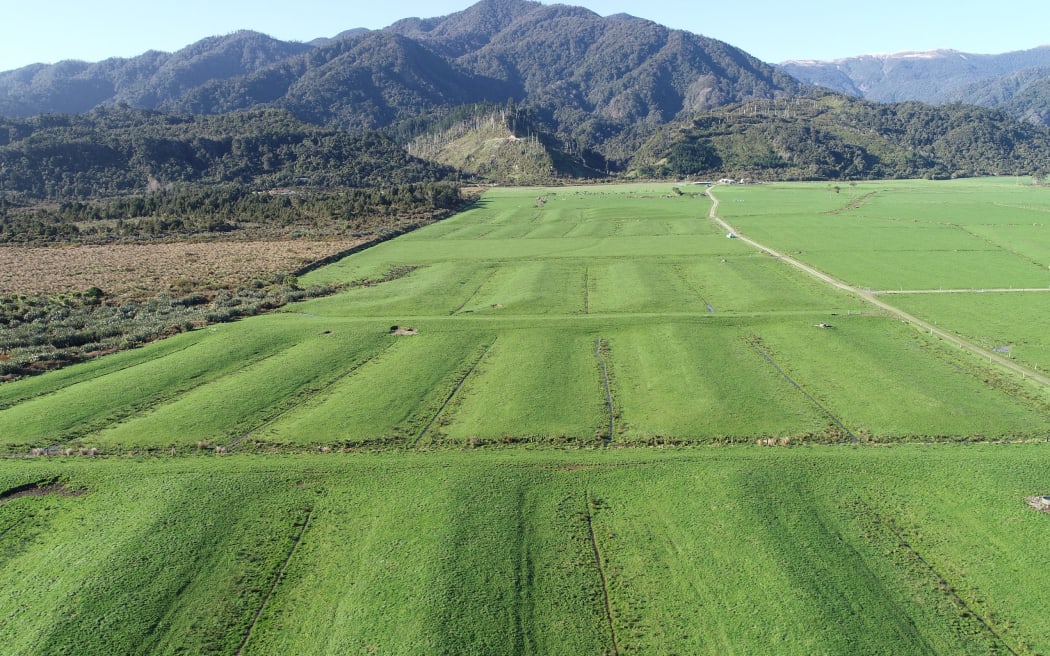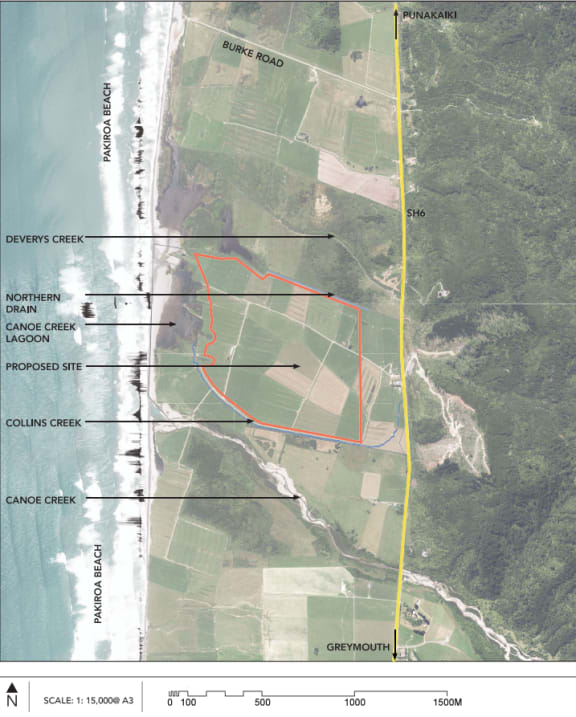
Looking west towards Barrytown across the lower end of the area to be mined along with adjoining coastal lagoon area, which is to be protected. Photo: Supplied/ LDR
A renewed application for a mineral sands mine on the West Coast is accentuating the positive - including over 70 new jobs - as Tiga Minerals tries to get its proposal over the bar after failing in 2022.
In Greymouth on Monday, a joint Grey District and West Coast Regional Council hearing considered a fresh application for land use consents to extract heavy mineral concentrate (HMC) from 63ha of a Barrytown Flats farm, north of Greymouth.
The previous application was rejected two years ago. Opposing submitters to the proposal, including from the Coast Road Action Group, are due to appear later today and tomorrow.
The proposed opencast operation will seek 'rare earth' minerals, in demand in the high-tech sector, including ilmenite, zircon, gold and garnets.

Tiga also wants to build a processing plant, which will be covered in a separate application. It is seeking permission for a minimum of 50 truck movements a day on State Highway 6 (the Coast Road), ether south to Greymouth or north to Westport.
Chief concerns in the vocal opposition from residents have been the alleged radiation risk in sand being exposed to the air and the impact of heavy trucks.
However, with interest in the West Coast's extensive mineral sand resource burgeoning in the past two years, Tiga has renewed its application.
Managing director Robert Brand of Tiga said their proposal would include a local Mineral Separation Plant to extract the high value components in the region first, rather than bulk shipments offshore of raw "low value" sand.
Tiga said its proposal included:
- A commitment to extend high tensile power north from Rapahoe to the proposed mine with the added benefit to the tourist hotspot of Punakaiki nearby
- Using rail at either Rapahoe or Stillwater for bulk export out of Timaru to minimise truck movements into Greymouth; or use Westport port with truck movements north along the Coast Road
Brand said Tiga had the full endorsement of Te Rūnanga o Ngāti Waewae and it had sought to engage the Barrytown community, for the latter "views on this project differ".
"We've done everything we can," he said.
Tiga knew issues about the coastal wetland and creek bordering the northwest aspect of the proposed site were contentious.

A view of the farm area to be mined looking inland towards the Coast Road and Paparoa Range. Photo: Supplied/LDR
Concern at the alleged effects on wildlife, including the rare and nocturnal flying Westland petrel, could be accommodated by Tiga, he said.
This would include nighttime light restriction and daytime operation only in response to community concern, Brand said.
The multiplier effect for employment in the area, above the 71 jobs proposed if the application was successful, would be significant, he said.
Brand said Tiga was working closely with a number of housing providers in the Greymouth area and looking at using bus transport for staff, rather than increasing traffic volumes on the Coast Road.
"The big challenge is going to be to find enough houses - we all know housing is in short supply."
Brand said the landowner of the proposed mine area had been somewhat "surprised and disappointed" at opposition to the proposal, which had "largely ignored" his interests.
"But it is his land. He has been very robust as to what he thinks the benefits will be. We'll provide him with a farm [that] is more productive than it is today: he's convinced of that."

A map submitted by Tiga in its consent application detailing the mine area on farmland, in red, with the dominant natural features including waterways detailed around the site. Photo: Supplied/LDR
Consents sought include for the discharge of ionising radiation, dust and water, earthworks and vegetation clearance within 100m of a wetland, and district plan permissions to develop an industrial site.
Since submissions opened, Tiga has told the hearing it has agreed to:
- Restrict truck movements and mining to daylight hours.
- Enhanced penguin surveys and conservation efforts to avoid effects.
- Investigate a penguin fence to protect penguins further from activities on site.
- No dogs on site except conservation dogs.
- The processing plant to be fully housed in a building with strict exterior light restrictions.
- An updated avian management plan to address Westland petrel interactions on site, including shutting down the processing plant if two interactions are recorded in a four-week period.
- Bird surveys of areas surrounding the site for duration of the mine to inform any management plan for threatened and at risk bird species at the adjacent lagoon.
- Wildlife cameras to detect penguins and petrels should they be present on site.
The proposal also involves reinstatement of riparian planting along the adjoining Collins Creek, and the edge of its lagoon.
In addition, a fenced-off 1.9ha wetland will be established in the northwest corner of the site when mining is finished plus implement other habitat enhancement and protection.
LDR is local body journalism co-funded by RNZ and NZ On Air.

